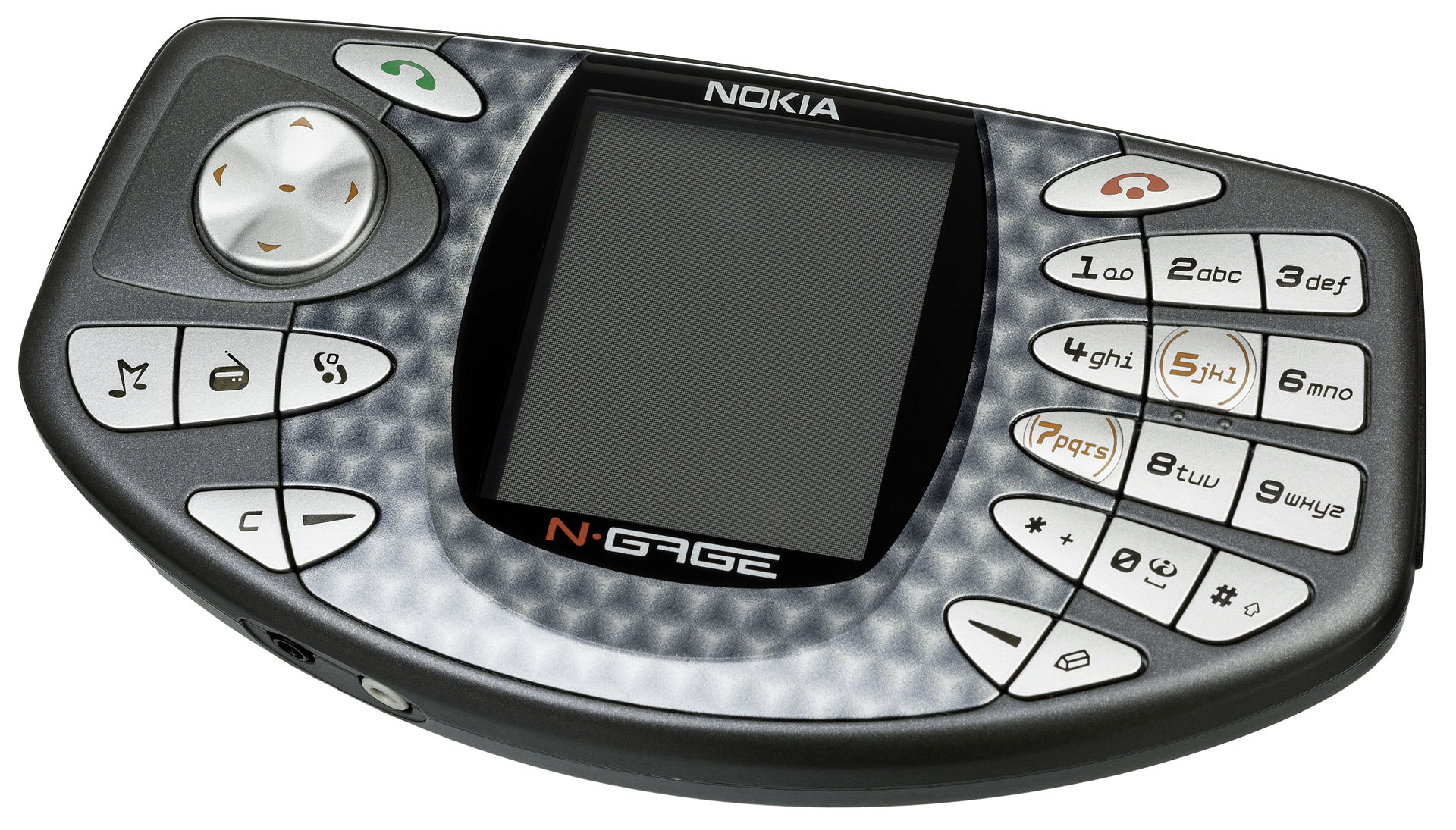

In 2017 it’s difficult to imagine there was a time when the world of mobile phones and video games were separate. But at the turn of the millennium mobile gaming was limited to pre-loaded titles like Snake and the embryonic Java (J2ME) download scene.
Nintendo was the undisputed king of the mobile scene and had fended off competition from numerous pretenders over the years, many of which were technologically superior to the Game Boy.
Enter Nokia with its ambitious attempt to unify the mobile phone with a portable games console: the N-Gage.
In 2003, the Finnish mobile phone giant was at its peak, enjoying the type of status in the industry that Apple now enjoys. Its 3210 and 3310 handsets were iconic and hugely popular and it felt that if anyone could crack Nintendo’s stranglehold it was the company from Espoo.
Released in October 2003, a year before the Nintendo DS, and two years before the PSP, the N-Gage was a unique device to say the least. It had a screen that was taller than it was wide, with a D-Pad and quick keys on the left, along with a numeric keypad to the right.
It also had the ability to make calls and send texts (well, it was a phone after all), and had calendar and media applications. It also had the ability to access the mobile Internet but Perhaps most weirdly, the user had to make calls ‘side-on’ due to the location of the speaker, leading it to be dubbed the ‘Taco’.
It was a weird hybrid, with design choices that reflected attempts to appeal to two audiences. Whereas now we consider portable gaming to be synonymous with smartphones, N-Gage was a groundbreaking idea.
Early reviewers noted that the use of the keypad as ‘face’ buttons made some games a little odd to play – most notably a port of Tony Hawk’s Pro Skater, which requires combos to be executed with perfect timing.
But one area it stood out was its gaming library. While it didn’t have the level of support that the Game Boy, and later the DS, enjoyed from Nintendo, the N-Gage was a technically superior device, offering 3D gaming on the go.
Sega, EA and Ubisoft were among the software heavyweights to bring their biggest games to the platform with mobile editions of Sonic, FIFA, Rayman, Tomb Raider and even Call of Duty all making an appearance. Nokia even got in on the act, releasing its first ever self-published title Pathway to Glory.
In addition to 3D, the N-Gage had wireless Bluetooth support and the ability to connect to the Internet. Indeed, N-Gage Arena supported online multiplayer and was essential for Sega’s MMORPG, Pocket Kingdom: Own the World.
But this failed to attract the attention of consumers. The device wasn’t cheap at £275 without a contract, and any subsidy offered by a mobile operator would have been little use to younger gamers in an age when pay as you go was king.
Nokia had hoped to sell ‘several millions’ during its first year, but attracted just a fraction of this target. By May 2004, a revised version of the handset called the N-Gage QD was released.
It modified the design significantly, making it easier to insert cartridges and moving the speaker to the front of the device so it could be held conventionally during phone calls. Some features were removed, including MP3 playback, the FM radio tuner, and USB connectivity, to make the device cheaper so it could be sold on a pay-as-you-go basis.
But these failed to arrest the N-Gage’s slide. Sales were still poor and the software dried up. Only 58 games were ever released and the last title was a version of Civilization in 2006.
The arrival of the Nintendo DS and the Sony PSP – by far and away the most successful challenger to Nintendo’s handheld crown – along with the possibility for advanced gaming experiences on more ‘ordinary’ mobile phones also helped to minimise the N-Gage’s appeal.
By 2007, Nokia had only sold three million units and by 2008 N-Gage was repurposed as a multi-device gaming platform that was more similar to Xbox Live or the PlayStation Network.
However, by 2009, a then-struggling Nokia decided to consolidate all of its services – entertainment, gaming and maps – into the Ovi Suite. The N-Gage name was retired and Nokia’s original foray into mobile gaming was over.
The N-Gage was ultimately a failure, but many of the ideas – full 3D gaming, wireless multiplayer and mobile online gaming – were core components of the Nintendo DS, Sony PSP and future smartphones.
Its release was a product of the spirit of creativity at Nokia in the early 2000s (See the Nokia 5510 for example) during which it also launched some of the first colour screen and camera phones.
Perhaps it’s best to remember the N-Gage as an idea ahead of its time that could have been executed just a little bit better.
American space agency prepares for testing of Boeing's Starliner, to ensure it has two space…
As UK and Europe develop closer military ties, European Commission says it will invest €1.3…
Zuckerberg seeks to revive Facebook's original spirit, as Meta launches Facebook Friends tab, so users…
Notable development for Meta, after appeal against 2021 WhatsApp privacy fine is backed by advisor…
First sign of shake-up under new CEO Lip-Bu Tan? Three Intel board members confirm they…
Trump's nominee for SEC Chairman, Paul Atkins, has pledged a “rational, coherent, and principled approach”…